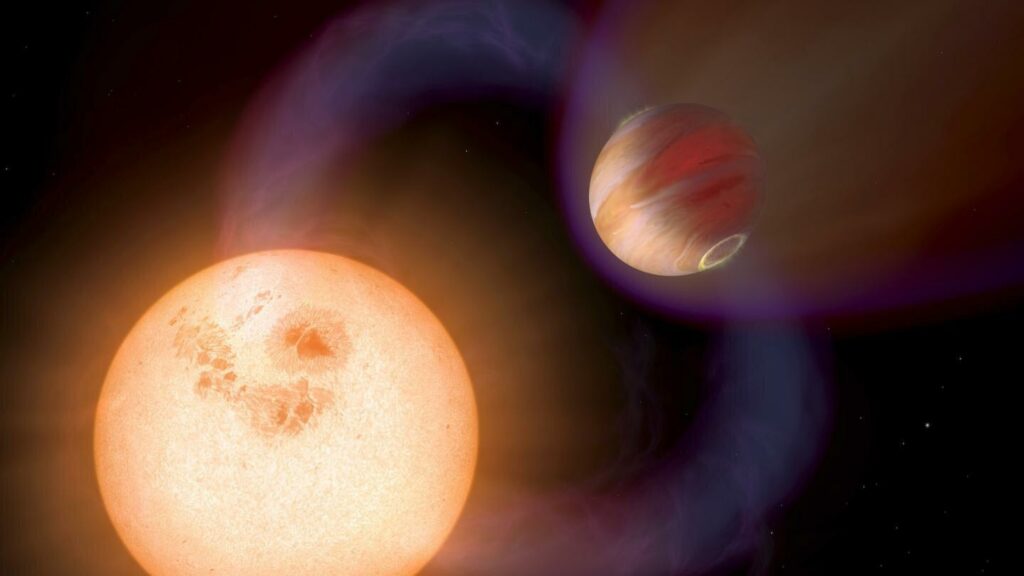Using data collected by the TESS telescope, astronomers have discovered a super-earth whose orbit lies inside the orbit of hot Jupiter. This discovery contradicts the migration model explaining the origin of such bodies.
Migration of gas giants
Literally the very first discovered exoplanet (this event occurred in 1995) greatly puzzled astronomers. It was a gas giant which orbit passes at a very small distance from the parent star. Because of this, its atmosphere is heated to extremely high temperatures. Astronomers use the term hot Jupiters to refer to such exoplanets. There is no analog of such bodies in the Solar System.

In the following decades, researchers discovered several hundred hot Jupiters. Since the existence of planets in orbits so close to the stars contradicts the existing models of their formation, the so-called migration theory was put forward. According to it, initially the gas giants formed at a much greater distance from the star and moved to extremely tight orbits later, under the influence of external factors.
One of the important consequences of the migration theory is that hot Jupiters should not have close neighbors. And at a time when most of these systems meet this requirement, astronomers already know a few exceptions. And recently their list has been replenished with another position.
Planet – Exception
We are talking about the hot Jupiter WASP-132b. It orbits an orange dwarf located 400 light-years from Earth. The orbit of the gas giant passes at a distance of 10 million km from the parent star, the temperature of the atmosphere is estimated at 500 °C.

During a recent series of observations made with the TESS telescope, astronomers were able to detect another planet in this system, designated WASP-132c. Its radius is 1.8 times the radius of the Earth, and its orbit passes at a distance of only 2.7 million km from the star.
The results of computer modeling suggest that the WASP-132 system is dynamically stable for a time scale of 100 million years. This means that the orbits of the planets had to assume their current configuration due to some other mechanism that has yet to be established by astronomers.
Earlier we talked about exoplanets that will be the first targets for the James Webb telescope.
According to https://arxiv.org
Follow us on Twitter to get the most interesting space news in time
https://twitter.com/ust_magazine

